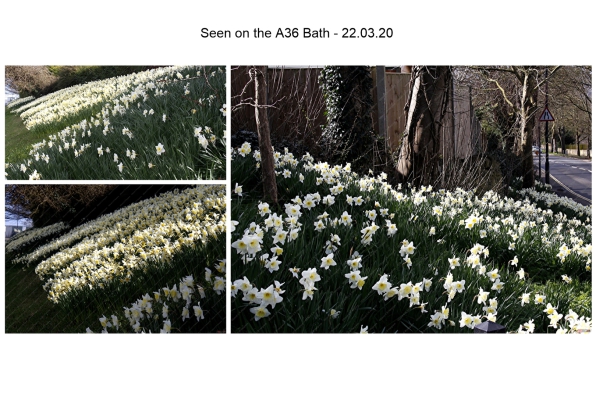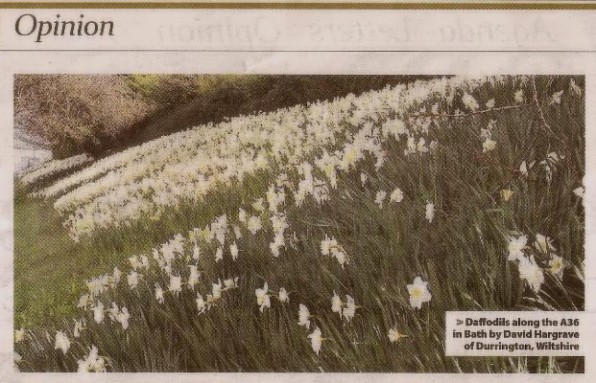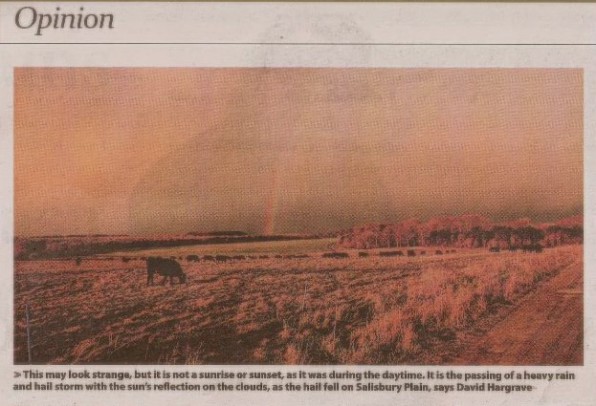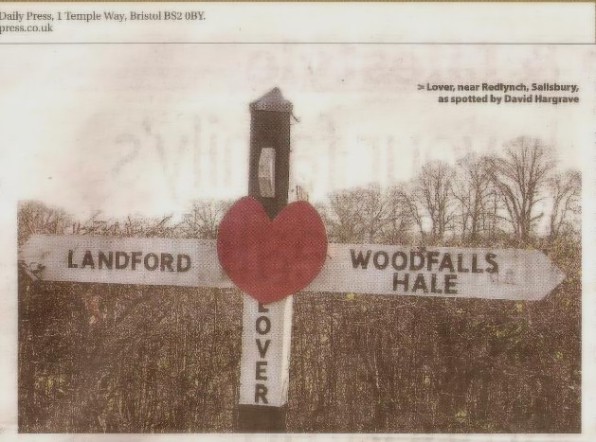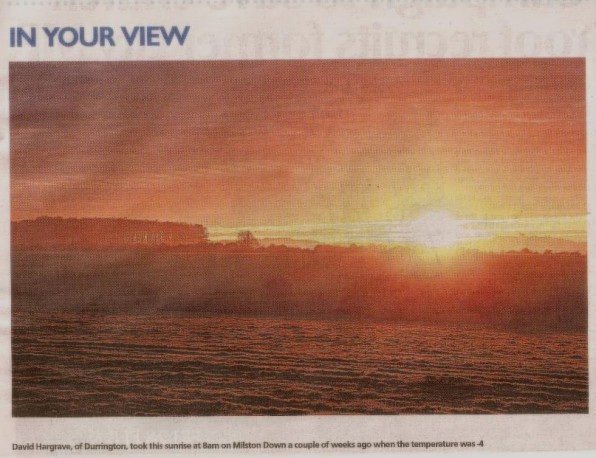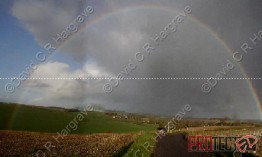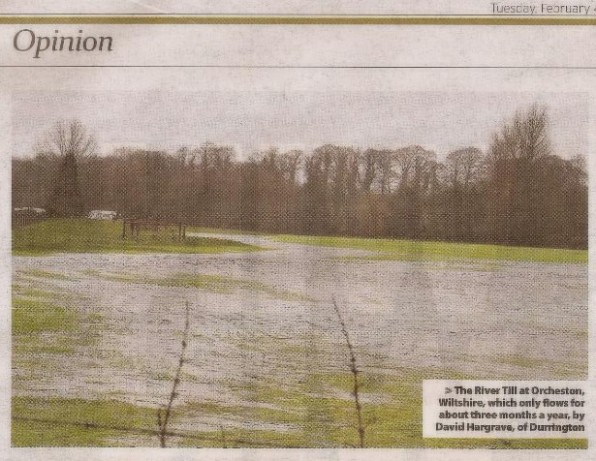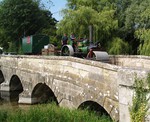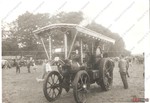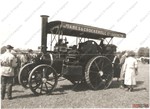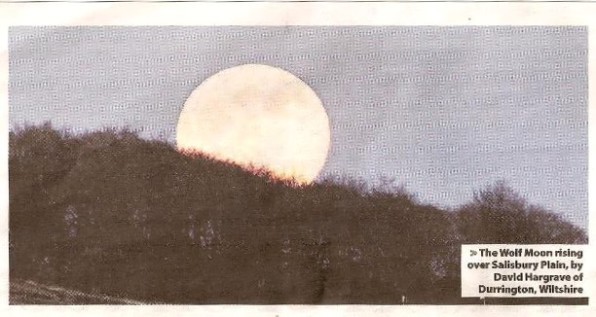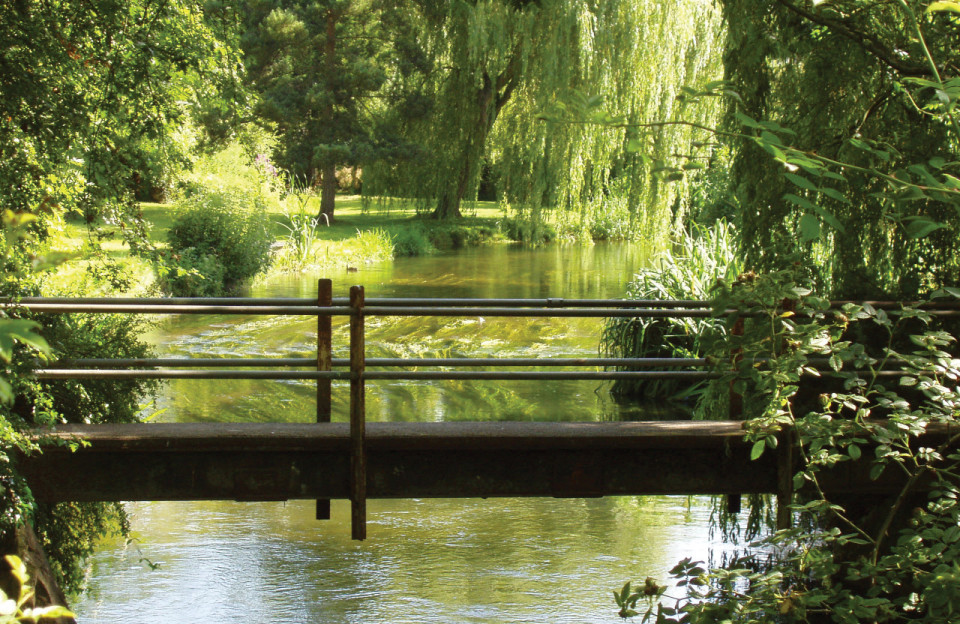
Landscapes - 2020
This page is dedicated to landscape photography that I have been lucky enough to capture when I am out and about with my camera, here there and everywhere!
Commemorative Cross - 19.09.20
I came across this memorial on one of my trips across Salisbury Plain. The memorial to a German soldier is located on the Ridgeway near Lavington
Vedette.
The cross was put up to mark the place where Jager Dirk Knoffel of 3 Company 313 Fallshirmjager Battalion - a Parachute unit of the German Luflande Brigade who was killed in an anti-tank vehicle that rolled over in 1993.
I understand that the cross was taken away last year by the MOD - Larkhill and Westdown Conservation Group and refurbished. A ceremony took place following its
return.
The Ornamental Lake at the Lakeside Garden Centre, Crockerton - 18.07.20
These photographs were taken at Crockerton near Warminster.
These local lakes are at the Garden Centre and I am not sure that the heron here is happy that they are open again to the public, as they might interrupt his
fishing!
The ornamental lake is formed out of an old clay pit that serviced the Crockerton brickyard.
The history of making things out of clay goes back a long way in the village - hence its name "Crockerton" and the derivation of local place names there such as "Clay
Street" and "Potters Hill".
The Crockerton Brick and Tile Company closed in 1954, after a period "suffering severe competition from Bedfordshire bricks".
A walk by the Kennet & Avon Canal - 11.07.20
The footbridge is privately-owned and crosses the Kennet and Avon Canal at Stowell near Wilcott. I managed to photograph the barge on a canal trip as it passes
under the suspension bridge.
This is one of the few surviving bridges by James Dredge, Senior. It is of additional historical importance because it is probably the least-altered Dredge bridge
in existence.
The bridge cannot be used by the public, but it can be viewed from the canal towpath. A number of photographs are available online, allowing details to be
studied. The 'taper' chains are forged from round rod. There are eight chain rods at the pier end, reducing to one at mid span. The piers are cast iron. In these respects the bridge
is similar to the Ness Islands Footbridges designed by James Dredge. The main deck beams are of rectangular section wrought iron bar, 4" deep and 1/2" thick. The transverse members, which are
slightly arched, are clamped to the main beams via cast iron brackets. The rest of the decking is wooden.
James Dredge (1794-1863) was originally a brewer in Bath in Somerset. However, by the 1840's he had turned his hand to engineering and designed a rather novel type
of Suspension Bridge, which subsequently appeared in various parts of the country.
It is thought that he originally designed his first bridge as a direct route to get his beer across the River Avon, saving expenditure on the alternative - either a ferry
or a long detour via the city centre and back.
It appears that there was another bridge engineer called James Dredge (1840-1906), who worked on several bridges in the London Area.
Whilst walking on the canal towpatch I came across this Dutch, Sea Going Sailing Barge. The barge was moored near Wooton Rivers.
These barges not only have a motor but also a folding mast, sails and also side paddle stabilisers, which make travelling through some locks on the canal a tricky
operation.
A typical traditional Dutch barge would have gaff rig, a bluff bow and stern, a pair of leeboards and a large rudder. The leeboards and rudder would be raised by an
arrangement of blocks and tackles. Schuyts engaged in eel fishing were said to have begun visiting London in the reign of Queen Elizabeth I and were granted the use of a berth there, which
continued in use until the 20th century. Schuyts vary greatly in size from 15-40 metres (50-130 feet) in length, and are generally built lighter than an equivalent Humber barge since they were
not designed to take the ground in the same way. Originally made of wood and powered by sail, Dutch barges today are almost exclusively made of steel and powered by diesel engines. Nowadays, the
"duck tail" transom, prop and rudder arrangement is better suited to diesel propulsion than the sail-optimised hulls of older types.
Many Dutch barges have now been converted for pleasure or residential use. Modern steel-hulled "Dutch barges" are built in other countries (such as the UK and
Germany) as well as in the Netherlands. Dutch barges are often used as liveaboards in English cities, especially London and Bristol, where, provided they have a permanent mooring, they give
affordable accommodation near the city centres. Provided they are less than 14 feet in beam, Dutch barges are able to use the UK's 14 foot locks, but cannot navigate the narrow canals of the English
Midlands, where the 18th century locks which date from the Industrial Revolution are only 7 feet wide.
Whilst walking I also came across this Red Admiral butterfly.
The Red Admiral black and spiny caterpillars create protective tents for themselves by folding nettle leaves together, emerging to feed on other
leaves.
Black with red fringes to the hindwings, red stripes across the forewings, and white markings towards the wing tips.
Widespread across the UK, particularly in gardens. Most red admirals migrate to the UK in summer from central Europe.
Caterpillars feed on nettles. Adult red admirals feed from flowers such as buddleia, bramble and ivy, as well as on the juices of fallen fruit.
Their proboscis comes in handy for this – while it may look like a straw, it’s actually made up of two tubes which lock together to form the feeding
tube.
With a diet of nectar and sticky fruit, it’s useful to have mouthparts that can be split into two for easy access to clean up.
In addition, whist stopping to take a photograph of a gnarled tree, I noticed a heron taking a rest in it before continuring its journey!
I noticed a lot of cuckoo pints along the canal towpath and could not resist photographing one.
Cuckoo pint also known as Lords-and-ladies, is a shade-loving tuberous perennial, native to UK woodlands and hedgerows, which can often become established in gardens.
Self-seeding readily, it can quickly take over a border under the right conditions and is difficult to control.
The Cuckoo Stone - 23.06.20
The Cuckoo Stone is a squat sarsen stone which lies on its side.
It is the same type of stone as the largest stones used in the Stonehenge circle.
The site of Woodhenge is around 500 metres to the east of the Cuckoo Stone, with Durrington Walls to the northeast. Stonehenge is around 2.5 kilometres to the
southwest.
The Cuckoo Stone was recorded by Richard Colt-Hoare on his 1810 map of the Stonehenge landscape.
The nearest other known sarsen stone is that found within Woodhenge during excavations in 1926-28
LOVER - 12.02.20.
These photographs were taken this morning at LOVER near Redlynch, Salisbury.
The settlement was once called Warminster Green, but by 1876 it was known as Lover, possibly a corruption of Lower Redlynch. Lover consists of three roads that
connect together to form a triangle. These are Besomer Drove, School Road and Church Hill. The name Besomer Drove refers to the tradition of broom-making in the area.
Lover has St Mary's church, built in 1837 to serve the Redlynch area. Nearby is Redlynch Village Hall.
A National School was built c. 1839 and rebuilt in 1878; it became Redlynch Church of England Voluntary Aided Primary School. After the school closed in 2006 its
playing fields were transferred to the parish council. Renamed Lover Green, the area is maintained by the community and is the venue for the annual Lover Country Fayre. In 2016 the school
buildings were bought by the community.
The Lover post office used to do much business around Valentine's Day, as the cards were postmarked "Lover". The post office was regarded as a "vital" service for
the 100 people a week who used it. The post office was closed on 2 April 2008.
Aconites & Snowdrops at Syrencot - 04.02.20
These photographs were taken today at Syrencot Woods on the Plain.
The yellow flowers being aconites and of course the white, the more common snowdrops.
The winter aconite is shorter than its chum the snowdrop, but has wider, more interesting leaves that are shaped a bit like baseball mitts.
Till Valley Floods - 26.01.20
“ A disastrous inundation”. A flood struck the Villages of Shrewton, Maddington, Orcheston, Tilshead and Winterbourne Stoke at 5 o'clock on the evening of Saturday
the 16th of January 1841.
After the 1841 flood at Shrewton and surrounding villages a charity was set up called the " Flood Charity". The appeal was launched in the national papers and from
the pulpits in the South of England. So great was the response that by May the 15th a total of £4145 13s 2d. After all the money had been paid out, enough was left over to build
fourteen flood cottages in the area, and they can still be seen with their distinctive plaques on the wall.
The list of claimants for Shrewton includes the names;
BlAKE, BLEWD0N, CHUBB, DAVIS, FELTHAM, FULFOED, GREEN, GREY, GRANT, GUNNING, HOOPER, INGRAM, KELLOW, LEVERSUCK, LIGHT, LONG, MORE, NILES, MAGGS, MUNDAY, NEWMAN, PARSONS,
PIERCE, PERRY, ROLFE, SCAMMELL, SCRUSE, SHEARGOLD, SMALL, SMALLBONE, SNOOK, SPERRING, STONE, TUNER, WATTS, WERNE,WEBB, WHEELER, WHITE, WILLIAMS, and WINDSOR.
Names from Maddington: ASHER, BAKER, BLEWDON, BRITTON, BROAD, COAL, CHANDLER, DAY, DAVIS, DOGGET, DREWETT, FRANKLIN, FULLFORD, GUNNING, HARRIS, HYTER, INGRAM. KILLFORD,
KITE, LEONARD, LIGHT, LONG, LUSH, MASLIN, MERRYDEW, MILES, NICHOLAS, PRANGLE, PIRCE, ROE, ROLFE, SAINSBURY, SCOTT, SCRUSE, TITT, TURNER, WATTS, WHITEMARSH, WHITE, WILLIAMS, WINDSOR.
Claimants from Tillshead. BAKER, BUNDY, COLEMAN, FELTHAM, FOUND, GALE, GIDDINGS, HIANES, KITE, LAWS, MAGGS, MUNDY, PARHAM, SMITH.
Claimants from Winterbourne Stoke: DOUNTON. DYER, GRANT, HARDING, KELLOW, LOADER, POULDEN, and SMITH.
Claimants from Orcheston St George: HARDING, GODDARD, and HIBBERD,
Claimants from Orcheston St Mary, BROAD, DEWEY, GODDARD, LEONARD, HAWKINS, HUTCHENS, LEMON, MILLER, SMITH, WILLIAMS
March 1841 Shrewton the late Flood—The Committee met on Wednesday the Rev. R. M in the chair when, an the motion of Mr. Mills, Mr, Card's estimate for the repairs was
produced and read as follows:
Tillshead
Wm- Smith, repair of dwelling -houses 45/.: Chas. Giddings. Repairing dwelling house if cottage It rebuilt, 30/, extra; Wm, Lawes, repairing dwelling-house and
premises 30/; Richard Gale rebuilding cottage (using the old stone), 55/.; Wm Kite, rebuilding cottage and woodhouse 60/.
Orcheston St Mary's
Richard Smith, building dwelling-house, bake-house stable, and; cart- house, nearly destroyed, 87/.; John Lemon, building cottage and stable, 6/,
Shrewton.
Benjamin Stone, building, cottage Wm, Windsor, building house according to plan, 140/.; Priscilla Small, building do,, do., l60/.; Wm Moore, building two cottages, &c., 110/.;Geo Pearce,
building two cottages &c.,85/.;.; Wm Pearce, building, house, &c.,, 140/.,; Robert Pearce, 63/,; ; Mr Gunning, 67/.: Joseph Blewden, 65/.; Diana Ware, 13/.;; Mr. Chubb, 43/.; | Mary
Pearce, 15/.; Wm. Scammell repairs to outbuilding 5/*; Robert Blweden building two cottages, 115/,; Prudence White, 100/. ; George Leversacan(? Levresuch ), 9/
Winterbourne Stoke.
Geo. Dyer, building house 149/; Wm. Pouldetn 280/.; John Grant, 5/.; George Kellow, rebuilding part of house, cathouse, stable &c.,125/; Mr Jacob Grant, rebuilding
two cottars, .110/.;| ditto, ditto, dairy, cathouse, stable, &c.,30/.
It was then, agreed on the motion of Mr Mills, that a copy of the above list should he given info the hand of etch of the committee, that they may have time to consider the claims before the matting
to be held on Wednesday next.
Flood Cottages, Orcheston - 25.01.20
A Grade II Listed Building in Orcheston, Wiltshire. A pair of attached cottages. 1842. Cob, Welsh slate roof with axial brick stack. 2-storey, 4-window front;
half-glazed doors with flat hoods to left and right, with two C20 casements and two 2-light C19 casements, first floor has two C20 casements and two 2-light C19 casements. To rear is original
continuous integral lean-to to ground floor, first floor has two 2-light casements. Returns have wavy bargeboards to gables, no windows. A large cast-iron plaque on wall to centre of front first
floor, commemorates the building of the cottages in 1842, following The Great Flood of 1841.
A particularly devastating flood, created by a rapid thaw of snow, swept off the Plain into the Till Valley in January 1841 and brought havoc through the villages of
Tilshead, Orcheston, Shrewton and Winterbourne Stoke, destroying 47 houses and numerous farms.
Netheravon - 15.01.20
These photographs were taken on Wednesday whilst out and about on Salisbury Plain.
The chalk spring water is flooding roads in Netheravon. These photographs show a completely flooded road which becomes a small stream most winters.
Fortunately this is not a busy road and the spring water runs from a chalk spring on the Downland, west of the village and into the River Avon.
The Chitterne Brook - 15.01.20
The Chitterne Brook is a small tributary of the River Wylye, which flows southwest through the village.
Its source is a chalk spring North of the village towards Imber and during wet seasons, this brook becomes a torrent, causing great concerns to the residents, with likely
flooding to its properties and the road through the village.
Chitterne is a village and civil parish in the county of Wiltshire, in the south west of England.
The village lies in the middle of Salisbury Plain, about 7 miles (11 km) east of the town of Warminster.
The River Till - 14.01.20
The River Till is a river that rises near Tilshead on Salisbury Plain, and which flows south and south-east to join the River Wylye near Stapleford. It also flows through
Shrewton and Winterbourne Stoke. It has been designated as a SSSI site.
The name ‘River Till’ is a double misnomer, firstly because this is not a river but a winterbourne – i.e. a winter stream that only flows for approximately three months
in a year.
Secondly because the name ‘Till’ is a Victorian misunderstanding.
At some point the false leap of logic was made that because the winterbourne flows from the village of Tilshead this meant it was the head of the Till.
In fact Tilshead arises from Tydolfshide, i.e. the hide of land belonging to Tydolf.
Even as recently as the early 20th century the winterbourne was known, in Shrewton at least, as ‘the Waterlake’, rather than the Till.
Queensbury Bridge with River Avon Replacement Pedestrian Bridge - 13.01.20
Queensbury Bridge was built in 1775.
Prior to the construction of the bypass around the town of Amesbury, Queensbury Bridge provided the main crossing over the River Avon on the western side of the town. In contrast to bridges that have been substantially re-engineered, Queensbury Bridge remains essentially as constructed, with the addition of modern road surfaces. It will contain both within its built structure and in its foundations, evidence for construction methods employed, and of the sequence of its use and repair. The bridge is a prominent local landmark and can be appreciated from the adjacent pedestrian footbridge.
The bridge, is Listed Grade II, built in 1775 by John Smeaton, is constructed of limestone ashlar on elm plank foundations. The central horizontal section is of three segmental arches of rusticated voussoirs and raised key blocks meeting a string band at the base of the parapet. At each end there is a smaller, similar arch. The piers have cutwaters to both sides. The parapet has a raised central panel bearing the date MDCCLXXV on each side. The bridge, which is 32m long, widens to 6m at its abutments and terminates with rusticated quoins. The bridge was named after the third Duke of Queensberry, the owner of Amesbury Abbey at the time of its construction.
River Avon Amesbury Replacement Pedestrian Bridge
The original footbridge was installed during 1957 to carry pedestrian traffic over the River Avon when Church Street, Amesbury was a busy trunk road. The footbridge steelwork was showing undetermined corrosion at critical members. It was considered unsuitable for refurbishment and required replacement.
Queensberry Footbridge Replacement Works started in May 2018.
In 1957 a steam tractor 'The Leader' was used to winch the new iron footbridge into position.
Reg No: BJ5597 “The Leader “ 33987
Built 1920 new to R H Dingle of Cornwall, used in a saw mill until 1951. Purchased and restored by Peter Barber of James Crockerell of Durrington,
Wiltshire. Used for winch work and new rubber tyres fitted. Restored as Showman's engine in 1961.
The engine was last seen in 2019 when it visited Beamish and is now owned by Frank Ingall and family.
Queens Falls Weir on the River Avon known as Tumbling Bay - 12.01.20
Photographs taken from Queensberry Bridge of the Queens Falls Weir on the River Avon known as Tumbling Bay. (This was also the site of a Hydraulic Ram).
The flooded meadows here have attracted several egrets.
Wolf Moon Rising on Salisbury Plain - 10.01.20
The first moon of 2020 is a known as a Wolf Moon. Native Americans and Medieval Europeans called this moon a wolf moon, it's thought to be because wolves howled
more at this time of year because there was less food.
It was spotted in the sky on January 10 from 5.08pm and ended at roughly 9.12pm.
The Moonrakers Legend
There are variations on the legend of Moonrakers and the location of the legend is claimed by many locals within Wiltshire and a couple outside.
The form told by Wiltshire's detractors is that a traveller came upon some drunken Wiltshire men one moonlit night. They were trying to rake a round glowing object from a
pool. The rakers claimed it was a large cheese they were trying to retrieve; the traveller declared it was obviously a reflection of the moon. No imagination, travellers.
Wiltshire's own variant on this is that smugglers detected an approaching Exciseman (revenue agent) on a bright moonlit night. In order to waylay suspicion the smugglers
dumped the contraband (usually barrels or kegs of French brandy) into a nearby pond. When the Exciseman had gone they began to fish out the barrels with hay rakes. However, the Exciseman came back
and asked them what they were doing. They told him it was surely obvious, they were raking out the cheese they could see in the water. The Exciseman laughed at them for being so stupid and rode off.
The "moonrakers" left off raking the moon, laughed at the Exciseman's naivety and continued to recover their kegs.
Variations on the second version include the smugglers coming from Bristol, Bishops Canning and elsewhere but Devizes seems a popular place for the enactment. The period
tends to be "a while ago", which is sometimes acknowledged as being the 17th or 18th century.

